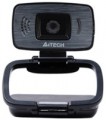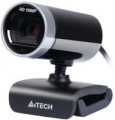Focus
Focus method — focus — provided in the design of the camera.
The simplest and most common option is manual focus; it requires some setup steps, but does not cause any particular difficulties, besides, it allows you to set the sharpness as you wish, without relying on automation.
Autofocus, in turn, saves the user from having to fiddle with the settings, however, it is also more expensive. In addition, autofocus systems may not work as you would like, and they still sometimes have to be adjusted manually (however, such a need is extremely rare).
Field of view
The viewing angle determines, first of all, how wide the field of view of the camera is, what area of the scene being shot falls into the frame. Accordingly,
a wide viewing angle allows you to capture more space and the lower the likelihood that something of what is happening will be behind the scenes. On the other hand, it should be taken into account that a strong increase in viewing angles leads to distortions of the “picture”, especially at the edges, as well as to a decrease in the size of visible objects and a decrease in detail.
Rotation angle
The range of rotation angles in degrees supported by the webcam. In this case, it means turning the camera to the right or left, without tilting back and forth.
Cable in box
Detachable cable design provides additional options for connecting a WEB-camera: the bundled cord can be changed to a longer or shorter one. Also
, the detachable cable is very convenient for storage and transportation.
The built-in cable is always in place - you can lose it only with the WEB-camera itself. On the other hand, a fixed wire cannot be quickly replaced with another one (for example, a longer one); and if it is damaged, you will have to carry the WEB-camera for repair or change it entirely.

